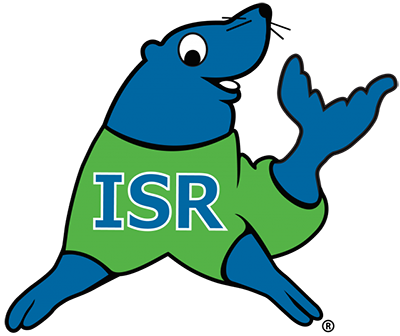H2O SURVIVAL SWIM SCHOOL
ISR SELF-RESCUE SURVIVAL SWIM LESSONS
We are proud to to be the only ISR provider for the Bryan college station and surrounding communities. Providing lessons to students off ALL ages in the Bryan and College Station communities. It is our swim school’s mission to teach children and infants the necessary skills to survive if they were to tragically fall into the water.

About Our Self-Rescue Survival Swim Lessons
Infant Swimming Resource’s Self-Rescue™ program teaches children how to survive if they were to reach the water alone. ISR swim lessons are one-on-one and customized to the developmental level of each child.
FLOATING
SELF RESCUE
SAFETY

ABOUT OUR INSTRUCTOR
Angela Brown, a Licensed Physical Therapist based in College Station, is deeply dedicated to creating ‘aquatic problem solvers’ through her ISR swim lessons for infants and young children. Her passion lies in equipping her students with the essential skills needed to navigate the water safely. Graduating from the Infant Safety Rescue (ISR) program in December 2021, Angela is committed to providing the safest and most effective survival swimming lessons, tailored to each child through one-on-one customized instruction.
Angela’s journey towards survival swim instruction was fueled by her role as a grandmother, affectionately known as ‘Yaya.’ While searching for swim lessons for her grandson, she noticed a lack of comprehensive offerings. Angela has always been a staunch advocate for children’s water safety, driven by her desire to prevent avoidable tragedies. Her husband’s decade-long career in child pool safety fencing exposed her to heartbreaking stories of toddler accidents, inspiring her to make a difference through swim instruction.
For the finest infant survival swim lessons in College Station, Angela’s ISR swim lessons stand out. She combines her extensive experience as a Licensed Physical Therapist with her ISR training to ensure that children not only learn to save themselves but also feel confident in and around the water. Enroll your child in Angela’s ISR swim lessons today and give them the gift of water safety.
Children between the ages of 6-12 months old are taught to roll over and maintain a back-float position in the event of an accidental fall into the water. Teaching your infant to float takes approximately 4 weeks. Private 10 minutes lessons per day are held 5 days a week, Monday through Friday. Skilled infants are taught to maintain a back-float in a bathing suit and in clothing. If you own a hot tub, pool, boat, or just enjoy the water, ISR highly recommends survival training once your infant begins to crawl.
The 4-6 weeks is an estimate that is based on the average time in which it takes most children to learn these survival skills. Every child is unique and ISR’s Self-Rescue® program is specifically designed based on your child’s individual strengths and needs. It is important to realize that this is an average which means that some children will actually finish more quickly while throughout lessons to ensure that he/she is not taking in water.
Everyone needs a little break from learning to process the information and in this case to give muscles a chance to recover. In addition, you need to be able to spend time with your family, as does your Instructor. Weekends are family time. Periodically, if weather or other issues have caused lessons to be cancelled for numerous days, your Instructor may choose to offer make up lessons on a weekend. This is strictly up to the Instructor and based on the availability of parents.
The reason for this is multifaceted. First, repetition and consistency are crucial elements of learning for young children. Research shows that short, more frequent lessons result in higher retention. Second, most children have fairly short attention spans and will not be able to focus on the task for longer than the 10-minute time span and we want to take advantage of the best time for learning. A third reason is that, though the pool temperature is maintained at 78-88 degrees, the temperature is still lower than your child’s body temperature. Lessons are work and therefore your child will also be losing body heat. Instructors check students regularly for temperature fatigue since this is an indicator of physical fatigue
In addition to educating infants and young children, ISR also teaches parents that there is “no substitute for adult supervision” and “No child is drown proof.” If a child needs his/her ISR Self-Rescue® skills, it means what should be several layers of defense have failed. The First goal is that the child is never able to access the water alone. ISR lessons are the last line of protection such that, should all else fail, your child has a chance at helping him/herself by using the survival skills they were taught.
Flotation devices give children a false sense of security and hold them in postures that are not compatible with swimming skills. If a child learns that he can jump in the water and go into a vertical posture and he will be able to breathe, he is getting the wrong idea about that environment. Flotation devices are for children who cannot swim. Children, who cannot swim, should not be allowed to learn that it is safe to play in the water while relying on a crutch. Life jackets must be worn in a boat or around the water when there is the potential for a submersion as a result of an accident i.e. a boat collision or capsize; they are not a substitute for the ability to swim or for adult supervision.
Fences should be required around all pools. However, it is not possible to fence every body of water, or to predict where and when supervision will break down.
Constant, undivided, 100% effective supervision would be the only sure way to eliminate drowning. Unfortunately, as parents we know this simply is not realistic. Infants and toddlers love to explore, and with everything else that goes on in our lives, as parents, we can get distracted. A moment’s inattention can allow a child to move out of our line of sight. This is not a failure, it is just part of our busy lives.
This brings us to the next layer of protection, pool fences. Pool fences exist so that should a child escape a parent’s supervision, there is a barrier between the child and the pool. We know that children are drawn to water, but we don’t want them to be able to get to the water alone. Unfortunately, pool fences are only as effective if they are used correctly EVERY time. Because many are not set up to be self-closing and self-latching, they allow for a high likelihood of human error. Even if they are self-closing and self-latching, if there is not regular maintenance, then they can fail. Another aspect that is often highly underestimated is the intelligence of children. A child needs only a chair or a small table to climb on to emulate opening the gate and/or climbing over pool fencing rendering even the best pool fence, useless.



